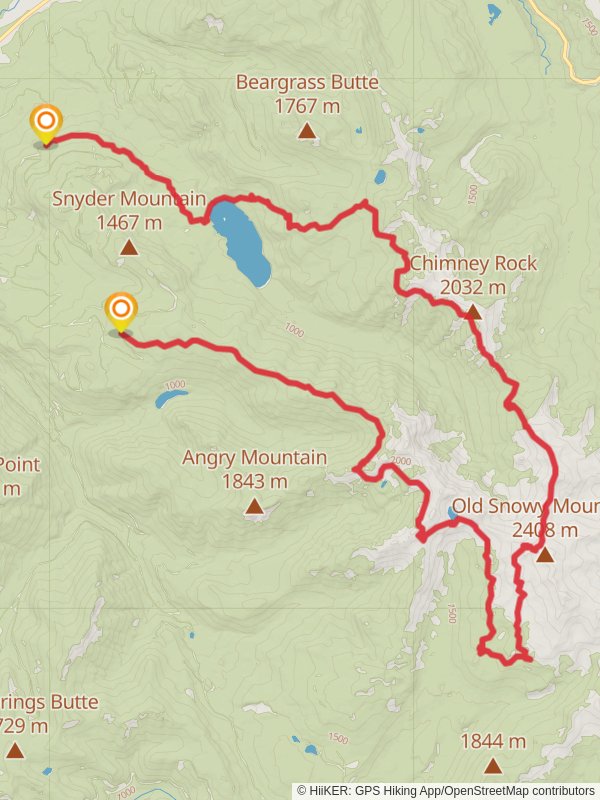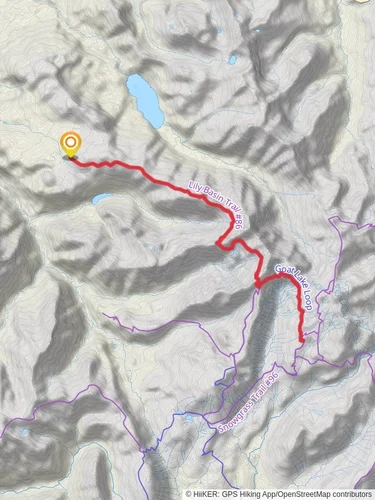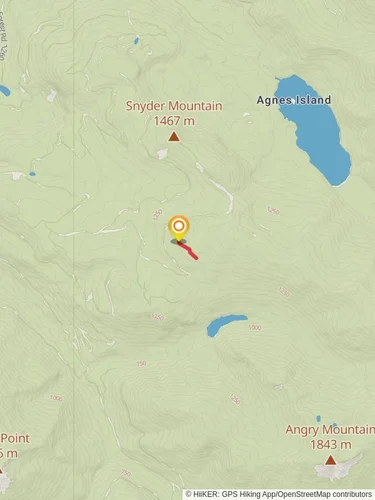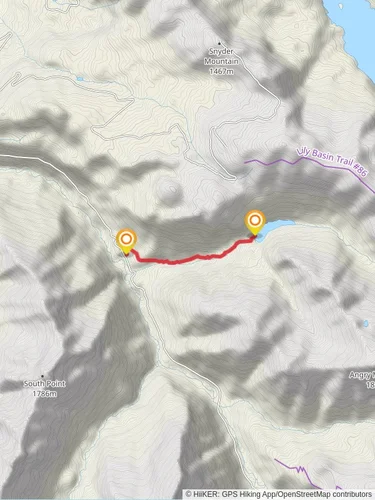51.0 km
~2 day
2162 m
“Embark on the Goat Rocks Circuit, a stunning, challenging trek through diverse landscapes and vibrant wildlife in Washington's Cascades.”
The Goat Rocks Circuit is a challenging and rewarding trek that spans approximately 51 kilometers (around 31.7 miles) with an elevation gain of around 2100 meters (nearly 6890 feet). This point-to-point trail is nestled in the heart of the Cascade Range, near Lewis County, Washington, and is known for its breathtaking vistas, alpine meadows, and diverse wildlife.
Getting to the Trailhead
To reach the trailhead, hikers can drive to the Berry Patch Trailhead, which is the common starting point for the Goat Rocks Circuit. The trailhead is accessible via Forest Road 21, which branches off from US Highway 12. For those relying on public transportation, options are limited, and it's generally recommended to arrange a private shuttle or carpool to the starting point.
Navigating the Trail
Hikers should prepare for a demanding journey that typically takes several days to complete. It's crucial to have a reliable navigation tool like HiiKER to track your progress and stay on course. The trail is well-marked in most sections, but weather conditions can obscure the path, making navigation tools essential.
Landmarks and Scenery
As you embark on the Goat Rocks Circuit, you'll traverse a variety of landscapes, including dense forests, subalpine meadows, and rugged ridgelines. One of the highlights is the Packwood Glacier, which you'll encounter early in the hike. The glacier is a remnant of the extensive ice that once covered the region, and it's a stark reminder of the area's glacial history.
Further along, you'll reach the Goat Rocks Crest, an exposed ridge that offers panoramic views of Mount Rainier to the north and Mount Adams to the south. This section can be particularly challenging, with steep ascents and potentially strong winds.
Wildlife and Flora
The Goat Rocks area is home to a diverse array of wildlife, including mountain goats, which are often seen grazing on the high slopes. Black bears, elk, and marmots are also common, so hikers should be knowledgeable about wildlife safety and food storage practices.
The trail is also renowned for its wildflower displays in the late summer. Fields of lupine, Indian paintbrush, and aster add splashes of color to the landscape, making for an unforgettable hiking experience.
Historical Significance
The Goat Rocks region holds historical significance as it was once an active volcanic area, part of the same volcanic arc as Mount St. Helens and Mount Rainier. The area's geology is a testament to its fiery past, with volcanic rock formations and pumice fields dotting the landscape.
Preparation and Safety
Given the trail's difficulty rating, hikers should be in good physical condition and have experience with backcountry travel. The weather can change rapidly, so it's important to pack layers and be prepared for all conditions. Snow can linger on the trail well into the summer, and river crossings can be hazardous, especially during high water periods in the spring and early summer.
Water sources are generally plentiful, but all water should be treated before drinking. As with any backcountry excursion, leave no trace principles should be strictly followed to preserve the natural beauty of the area for future generations.
Conclusion
The Goat Rocks Circuit is a must-do for seasoned hikers seeking a challenging adventure amidst some of the most stunning scenery in the Pacific Northwest. With proper preparation and respect for the natural environment, this trail promises an unforgettable experience.
Goat Rocks Circuit passes through these parks:
Reviews
User comments, reviews and discussions about the Goat Rocks Circuit, Washington.
4.0
average rating out of 5
7 rating(s)








